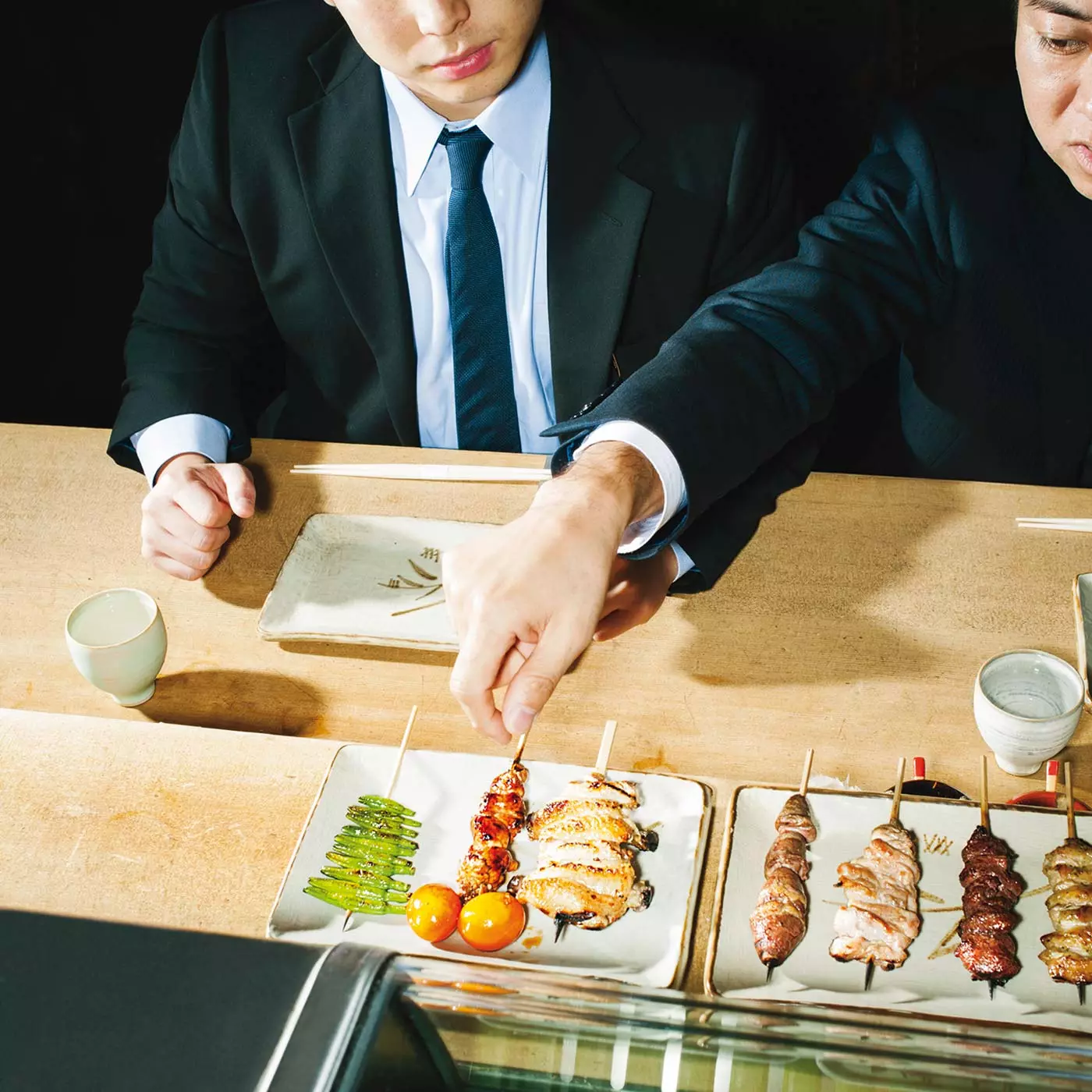
At the Toritama restaurant, located in Kagurazaka, Tokyo's 'Little Paris', they take advantage of all the parts of the chicken: wings, heart, neck, kidneys and even the tail meat
If you want to see what the fifth generation of tempura masters are capable of doing with a pot of boiling oil, make a reservation at Ippoh, a Tokyo landmark since 1960. I've been coming for a decade, but today I'm joined by two friends who haven't seen the show. From the bar, we watch in ecstasy as Masaru Seki transforms everyday ingredients – shishitos (green peppers), prawns, egg yolk– in golden nuggets.
You can learn a lot from your stool: how the chef marks a squid or how, in perfect harmony, he keeps an eye on the oil while he turns the dough and the oil with his silver chopsticks. And though Masaru-san rarely speaks, there is silent conversation in the air. As we watch him, he gauges our appetite, how quickly we devour lotus root or how eyes light up at crispy maitake.
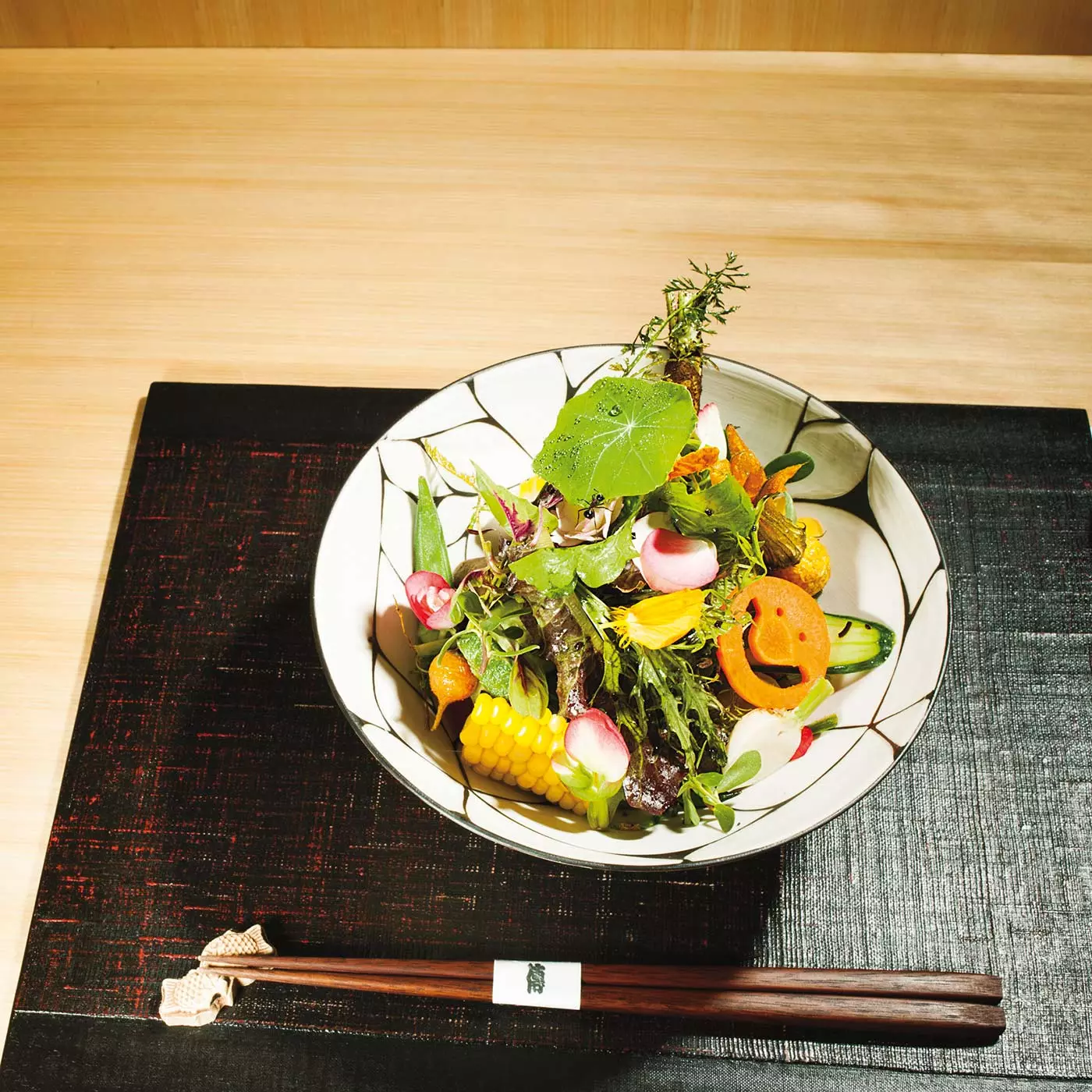
20 Veggie Salad (and Smiling Carrot) at Jimbocho Den
At 45 minutes, a grilled cheese sandwich on fluffy bread arrives in a casserole dish, brimming with umami, sweet and light. It is so rich that we laugh out loud. It wasn't until ten days after eating in Tokyo that I realized I hadn't sat down at a table as such. He had tried delicacies always served at the bar, or in a noisy tavern yakitorio in a three Michelin star restaurant.
Today the Japanese are no longer the only ones, but they were pioneers in the bar culture and the format has evolved. The open kitchen –or style kappo – was born in 19th century Osaka, as an informal venue. At the end of the 20th century, the trend spread throughout Japan, from the most sophisticated restaurant to the bars of sushi , which have globalized this concept.
Today the kappo it is functional. Here, in the land of capsule hotels and minivan-sized apartments, some venues have a square meter of tables, chairs and a kitchen. The format endures by choice and necessity. Most restaurateurs place the stoves in plain sight. It is the favorite way to eat in Japan, and this responds to some keys. For starters, the stigma of dining alone is non-existent here, which is unusual in the West. If you walk into any Tokyo restaurant, possibly half the clientele are eating alone. The bars are ideal for one or two people, but not so much for groups – perhaps it is better that way. Second, cooking is both the process and the product. For the chef, it's a show that deserves all eyes from the proper stage. For customers, watching a chef is essential to enjoying the Show . The most modern premises try not to distract with the decoration.
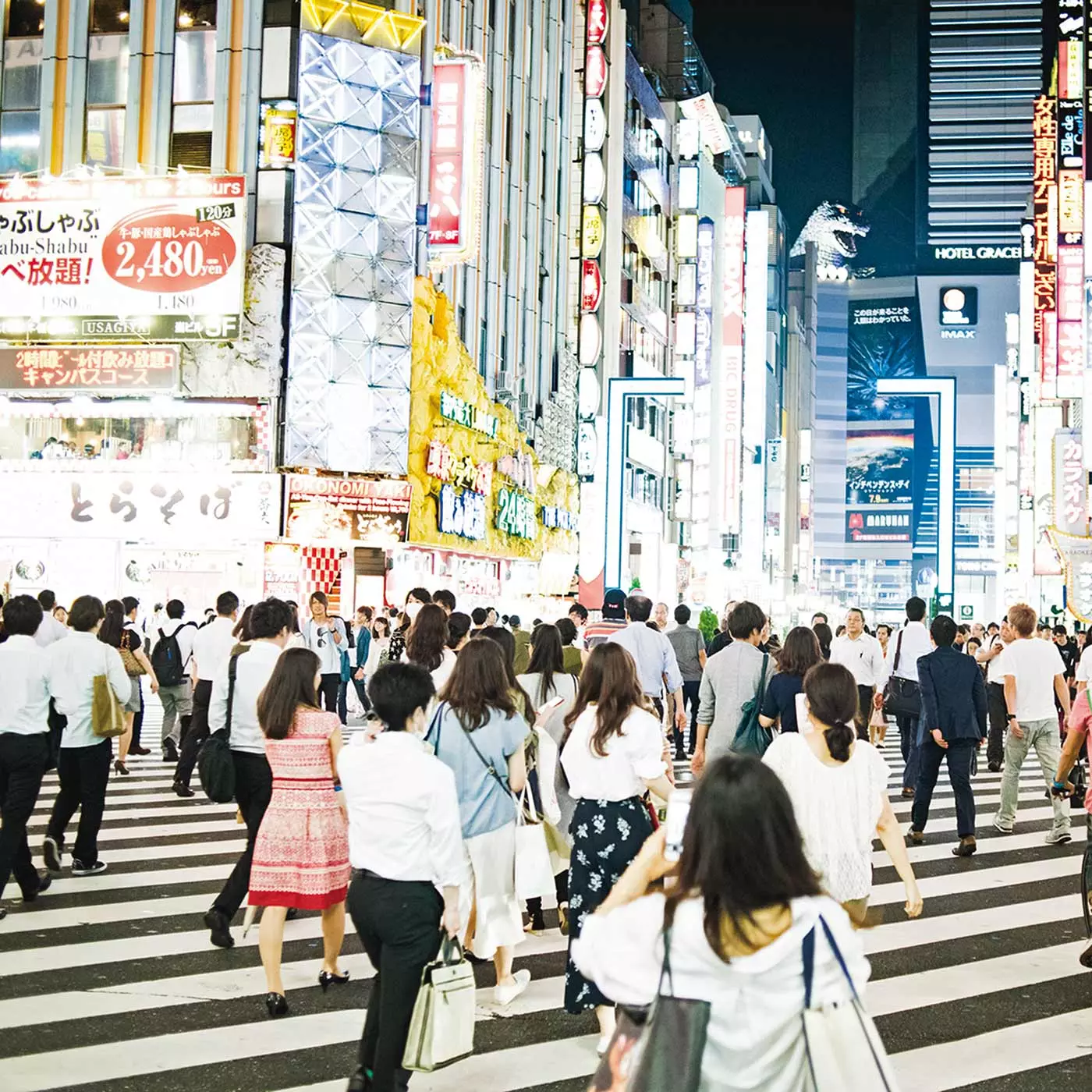
The Kabukicho district boasts endless bars
The experience exceeds the visual. "There are foods that take on meaning when you hear them, not just when you see, smell or taste them," says Yukari Sakamoto, a chef in Tokyo. “The rhythm of a knife julienned cabbage in a restaurant tonkatsu . The crackle of oil in another tempura. At the bar, those sounds enhance the experience.”
In a Western restaurant, the menu and the waiters – words and abstractions – are the only links to an invisible kitchen. In these places, the contact is with the chef, from the welcome: irasshaimase !
In Japan, this interaction is a dialogue, even without speaking the same language. You might surprise a chef from sushi measuring the size of your mouth to turn the rice into a perfect nigiri. “ Omotenashi – hospitality in the small details – is at all levels”, Sakamoto points out. “ A chef watches his customers from the bar and adjusts the menu for them ”.
For Zaiyu Hasegawa, the chef's approach to Jimbocho Den—whose eight-seater bar is my favorite place in Tokyo—directly to diners is a way to stay engaged and inspired. “I used to work in a restaurant with a closed kitchen. I felt trapped. He asked the waiters: do customers smile? what did you eat first? Frustrated, he began to spy on them: how could he know if they liked him or not? At the bar, the relationship between chef and diner is more revealing. If food were a theater, it would be like watching it from the backstage . See up close how they caramelize your foie , how the bowl is overflowing with shiso, how a giant octopus is sliced right next to your plate, and, of course, the spontaneity of a chef at work. In a culture known for its finish and perfectionism, where the real seems hidden behind a chiffon curtain, here you can breathe a fresh and charming intimacy , which seems to be far from the discreet Japanese essence.
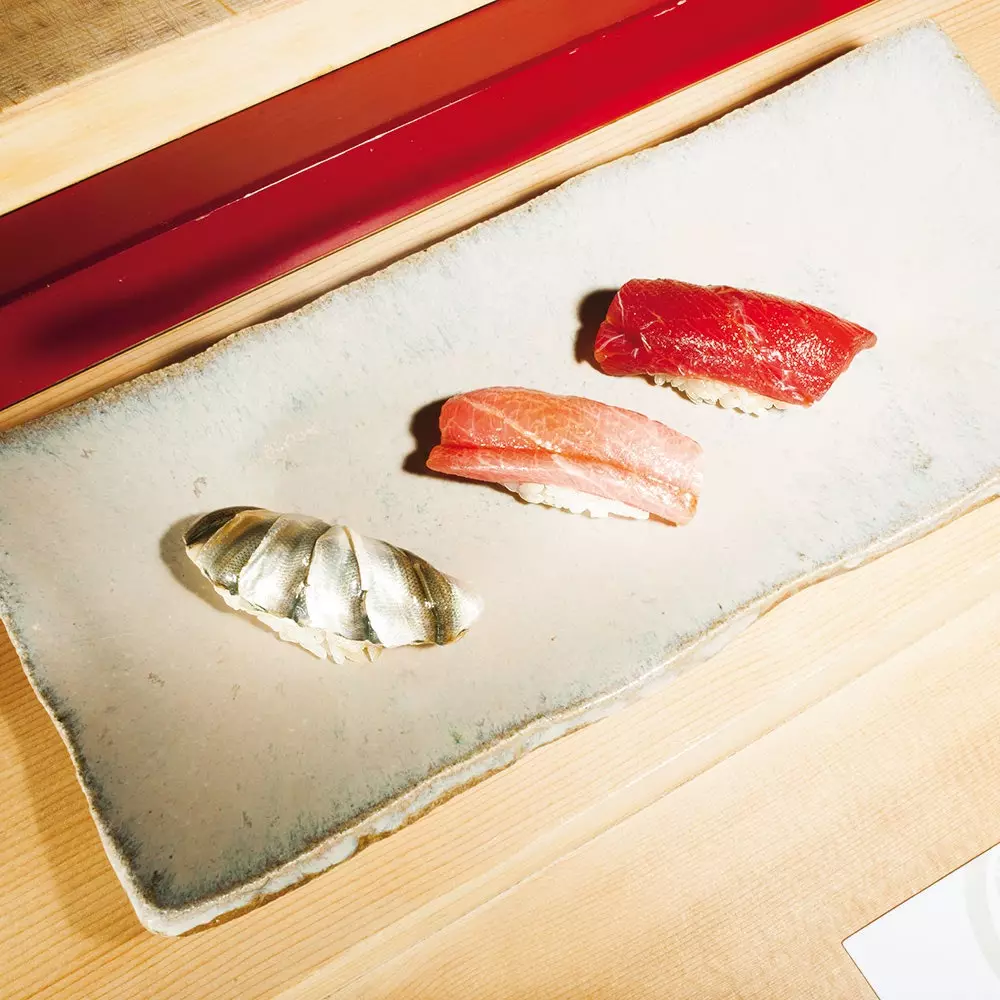
Nigiris of two types of tuna and tarpon at SushiYa
sushi
The scene. Tucked away in an alley off another Ginza alley, SushiYa (literally 'sushi shop') looks like a typical sushi den (a square room with an L-shaped bar in the middle). It is run by Takao Ishiyama , a 32-year-old, 1.80-meter genius who has already become one of the best sushi artisans in Tokyo in just four years. And the fish (my God, the fish...): the otoro tuna, fatty and exquisite, like flakes of bacon; the tuna smoked over the coals and the ikura from Hokkaido adorned with yuzu fur. Today is the best in town.
The strategy. Plan ahead: The eight bar stools are expected to wait at least a month. Chef Takao-san's multi-course omakase menu takes an hour.
RAMEN KIKANBO
The scene. You'll recognize René Redzepi's favorite spicy ramen stall north of Kanda Station by the queue outside—a dozen hipsters. Inside, the kitchen is shadowed by steam from a pot of scalding broth tumbling onto the bar, where 15 lucky souls splatter their eyebrows and devouranoni (demon) ramen: a spicy miso soup garnished with chili peppers and peppercorns. Sechuán, better with an ice cold Asahi to lower the temperature.
The strategy. Go in the middle of the afternoon, between rush hours, you will have to wait less time. The line will take you 30 or 40 minutes, and the food may last 10. You ask for your turn at a vending machine, a contraption that spits out a ramen ticket at you.
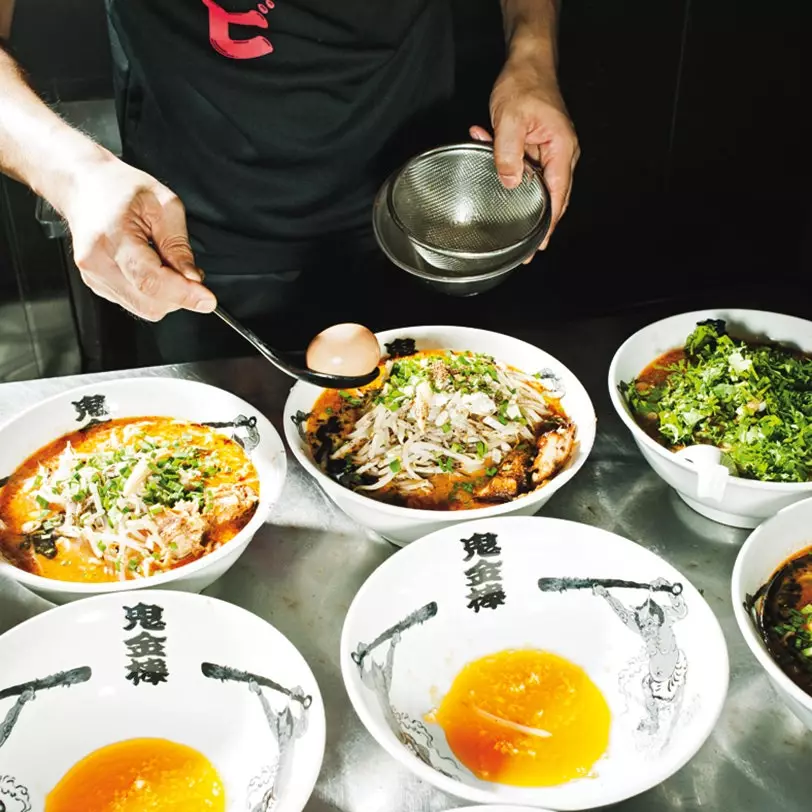
Miso ramen Kara-Shibien Kikanbo
IPPOH TEMPURA
The scene. Masaru Seki comes from the considered league of tempura masters; This elegant Ginza restaurant (a quiet space above a Barneys New York headquarters) is an offshoot of the 166-year-old Osaka original where his father and grandfather worked. You never imagined that tempura could be so light and so tasty.
The strategy. Reserve a table very early, before seven in the evening on weekdays, and they will serve you a shot for being the only customer at the bar from Masaru-san, whose level of English is sufficient to guide you through the ingredients.
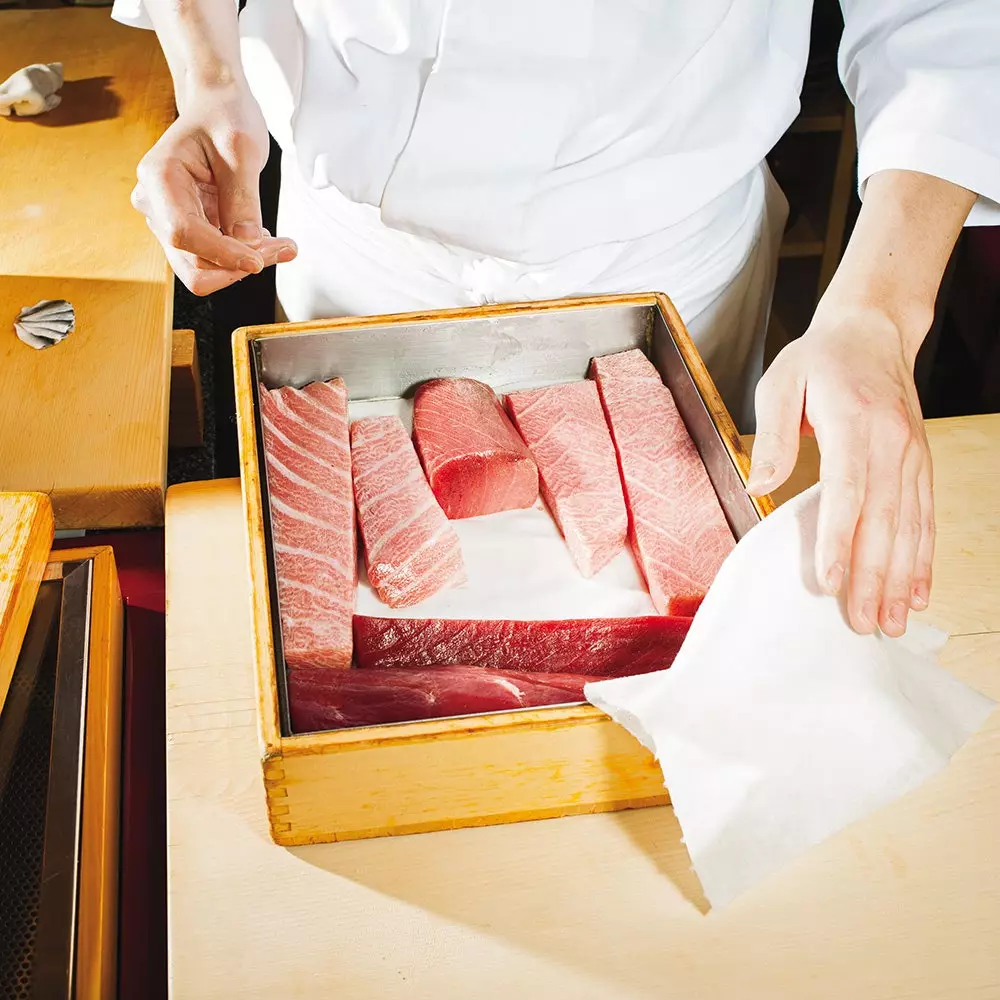
Chef Takao Ishiyama prepares tuna steaks at SushiYa
YAKITORI TORITAMA
The scene. hidden noisy tavern yakitori take advantage of every part of the chicken: in total there are more than 30 recipes, from thighs marinated in miso to a creamy thymus (a delicious gland). It's a circus all the time. You and 21 other people will be able to watch it from the L-shaped bar, like fire jugglers throwing skewers over the coals, undeterred by the flames.
The strategy . The expat-filled Kagurazaka district is known as 'Little Paris'. Buy in their botiques in the afternoon and after go make a hole in Toritama first thing at night.
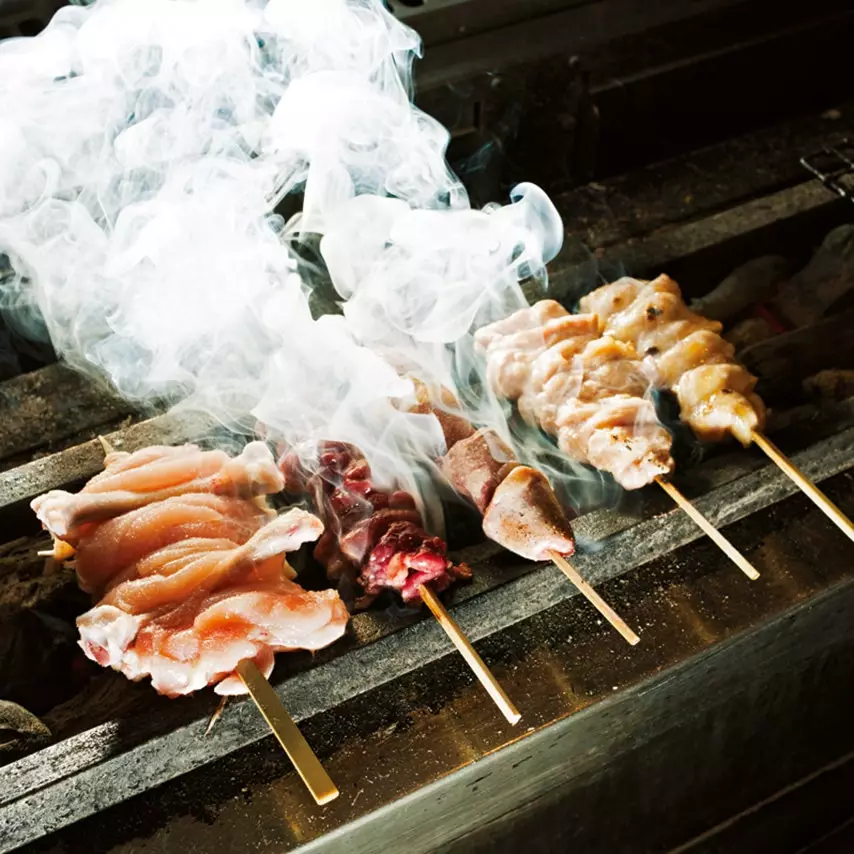
Toritama Grill
IZAKAYA KOTARO
The scene. It is very likely that you are the only non-Japanese in this tavern. Tokyo's top chefs and Shibuya's beautiful people gather at Kotaro Hayashi's ten-seat bar for fine seasonal offerings of hearty Japanese tavern food, like tofu with sauteed leeks Y fried baby sardines . Kotaro-san is passionate about sake: he works with just nine small jizake breweries, and with it he is able to offer unique seasonal acquisitions.
The strategy. Put yourself in the hands of Kotaro-san. Both he and his team speak basic English, but will guide you through the meal with a smile (and a Japanese-Spanish app will help you a lot).
MODERN JAPANESE JIMBOCHO DEN
The scene. The funniest restaurant on the Japanese scene is run by 38-year-old Zaiyu Hasegawa (who Brazilian chef Alex Atala says is Japan's best young talent). What sets Zaiyu-san apart is his devotion to laughter, a rarity in Michelin kitchens. To sit at his bar for eight is to dive headlong into a menu of about ten dishes : a kind of impromptu comedy show, as the chef and his team use surprise after an eccentric wink. Like the laughing head of Zaiyu-san from the bar, the carved carrots with smiley faces among the green of the salad, and the rogue homage to KFC (served in an illustrated box with a Den-tucky fried Chicken) : inside, what It looks like a standard fried chicken wing and is stuffed with a mixture of rice, potatoes, or beans, and seasonal ingredients like mushrooms and ume plums. Fun, yes, but also seriously delicious.
The strategy. It's a one night plan: dinner requires several hours. Remember that at the end of 2016, Den moved from peripheral Jimbocho to exclusive Gaienmae. The new space will maintain the chef's bar and the reserved areas. As it's usual, you will have to reserve a place at least two months in advance.
GRILL JOMON ROPPONGI
The scene. The Roppongi neighborhood headquarters of this popular Japanese yakitori and steakhouse is often occupied by young Japanese couples, as well as groups of friends up for some serious drinking. The positive side? Here the culinary proposal is sensational and the clientele with the most desire to party usually prolongs the night at the tables in the back . It's best to sit at the bar, across from the grill, where rewards like a near-molten strip roast and golden bacon-wrapped persimmons arrive.
The strategy. Like so many other places in the night-owl neighborhood of Roppongi, Jomona opens well into the early hours of the morning. It is the ideal restaurant to give you a tribute at midnight in the middle of jet lag insomnia, before or after going for drinks. A word of warning: just know that whatever you wear that night will end up smelling like the smoky delicacies that pass through the barbecue grill. Jomon Roppongi.
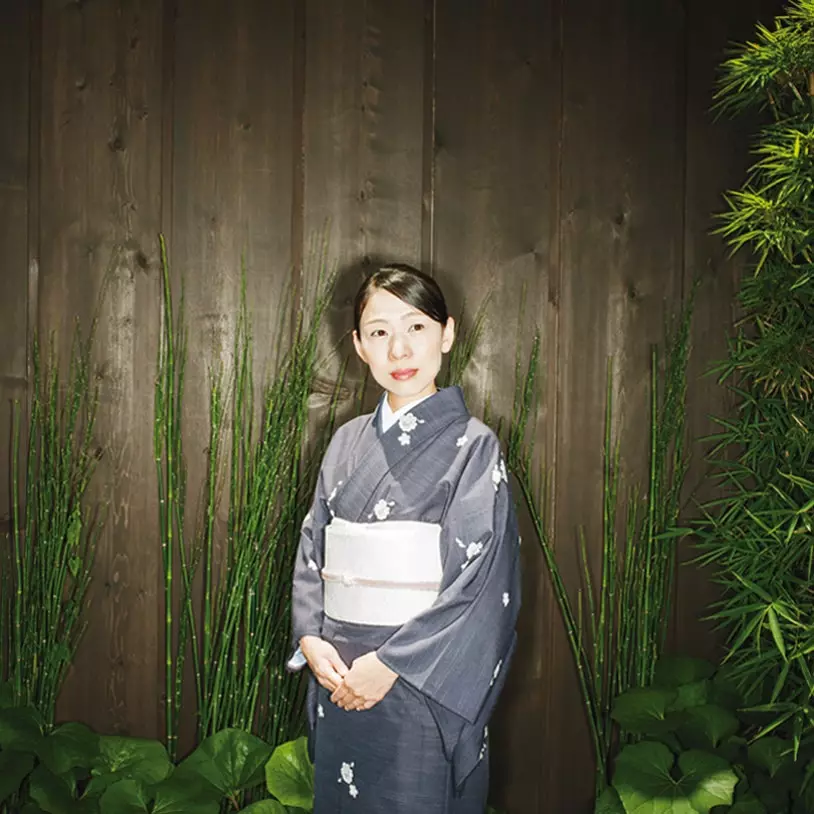
Emi, wife of Zaiyu Hasegawa, at Jimbocho Den
BAR BENFIDDICH COCKTAILS
The scene. Here, and this is not an exaggeration, there are thousands of signature cocktail bars, but none quite like this tiny bar above the glittering Shinjuk or. When your eyes get used to the candlelight, you will realize that this place is by no means a pretentious speakeasy, but rather a pleasant bar serving wonderful cocktails. The owner, Hiroyasu Kayama , in his ivory evening jacket, can suggest a more special Japanese whiskey (try any of Ichiro's), but you should also order a Negroni just to see how he makes his particular 'Campari' in a mortar with mysterious dyes and a dozen botanicals.
The strategy. Like most Tokyo cocktail bars, this one, on the ninth floor of an office building, is hard to find (thank God for Google Maps). Reservations are not necessary, but it is better to call ahead.
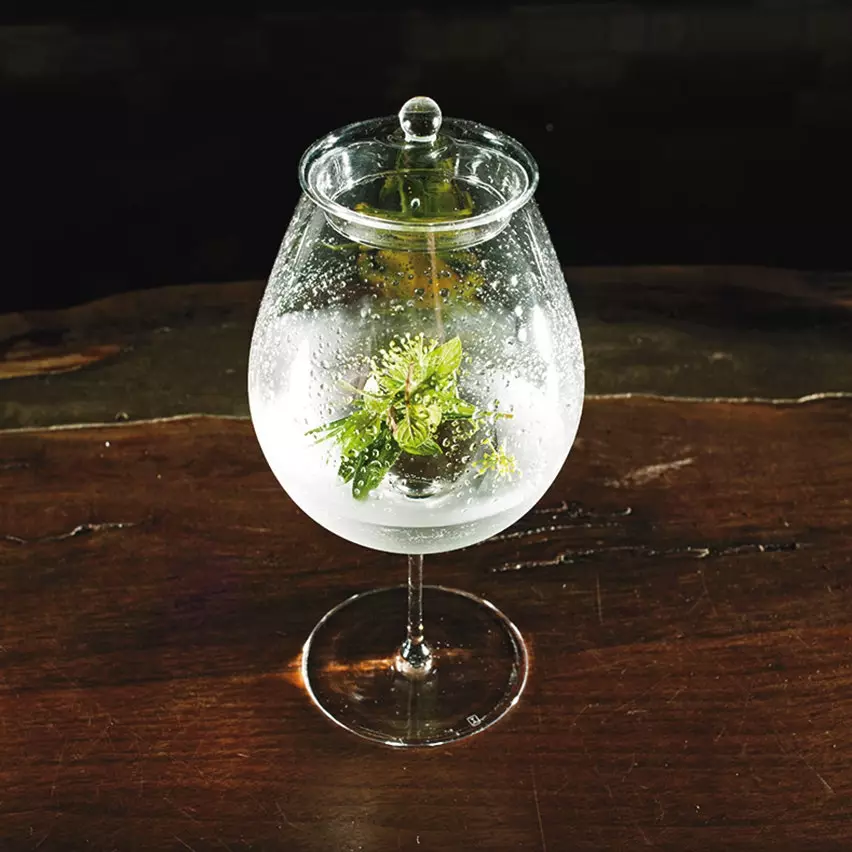
Kayama Special (Tanqueray Nº Ten and aguaforestal) at Bar BenFiddich
MUSIC BAR MARTHA
The scene. Today multiplied throughout Japan, the record bar is one of the best trends of the 21st century, although the concept is more from the previous century. Like some music geek friend's basement arcade, these types of bars love vintage vinyl, strong drinks and the value of the aforesaid. Here and comes to shut up, listen and drink. in full Ebisu , this elegant bar is among the most refined options, with its great cocktails and an extensive collection of soul, funk and jazz, which plays through the amplifier and refrigerator-sized tweed-covered speakers.
The strategy. Of course, the strict policy of the place prohibits shouting conversations and taking photographs. So you'll have to resist Instagramming those beautiful handmade glasses (you can go to Kaminarimon and get some at Sokichi, the reference of all bartenders in Tokyo).
COFFEE COFFEE OF L'AMBRE
The scene. Many newcomers lay claim to the throne of Tokyo's craft coffee, but this sepia-toned, yellowed-walled relic in Ginza, founded in 1948 , prevails over the rest. Owner Ichiro Sekiguchi, who turns 102 this year, was a coffee artisan before the place went modern. Each mug is meticulously crafted. L’Ambre offers aged beans: Colombian from 1954, Guatemalan from 1995. But the real draw is the iced coffee, chilled in a shaker and served in a glass.
The strategy. In L’Ambre you will find some somewhat unstable tables in the room to sit down. But without any doubt you will prefer to do it at the bar to see your Tokyo barista at full capacity.
* Article published in the Condé Nast Traveler Magazine Spain 103. Subscribe to the printed edition (**11 printed issues and digital version for €24.75, by calling 902 53 55 57 or from our website **) and enjoy free access to the digital version of Condé Nast Traveler for iPad. The February issue of Condé Nast Traveler is available in its digital version to enjoy on your preferred device.
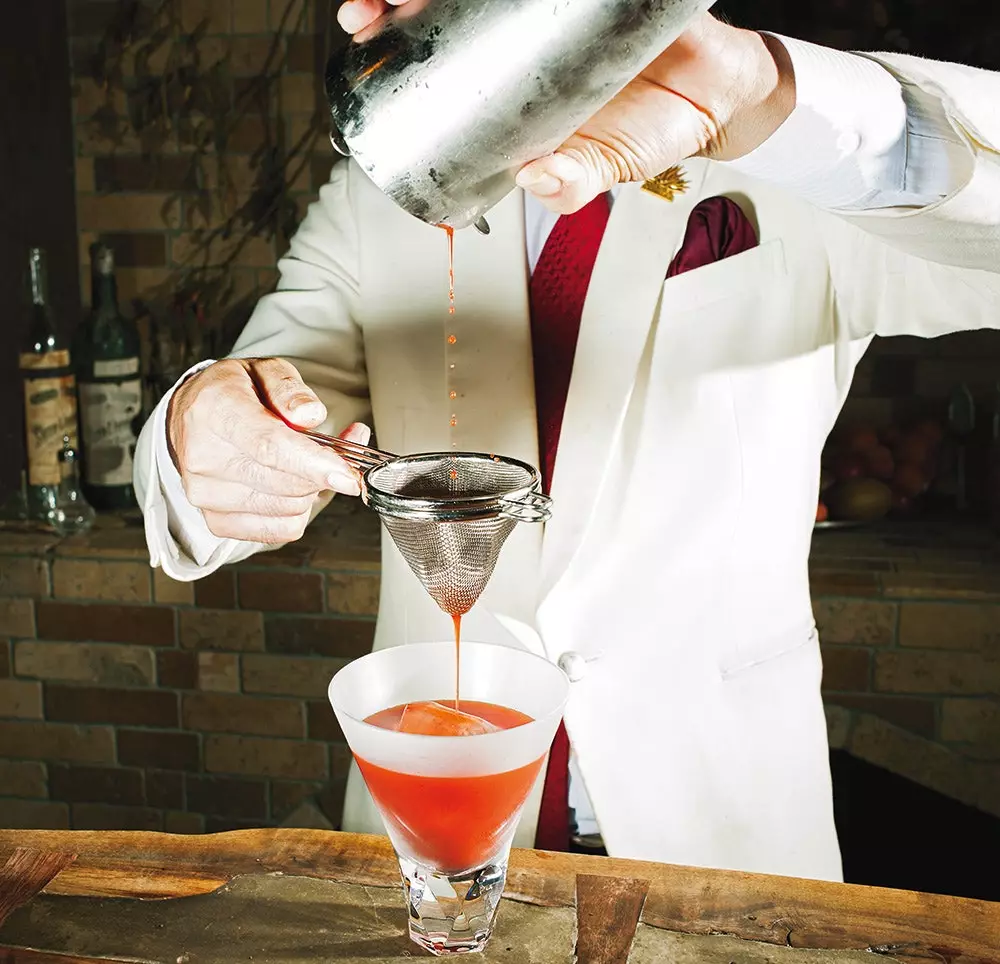
Artisan Campari at BenFiddich Bar
